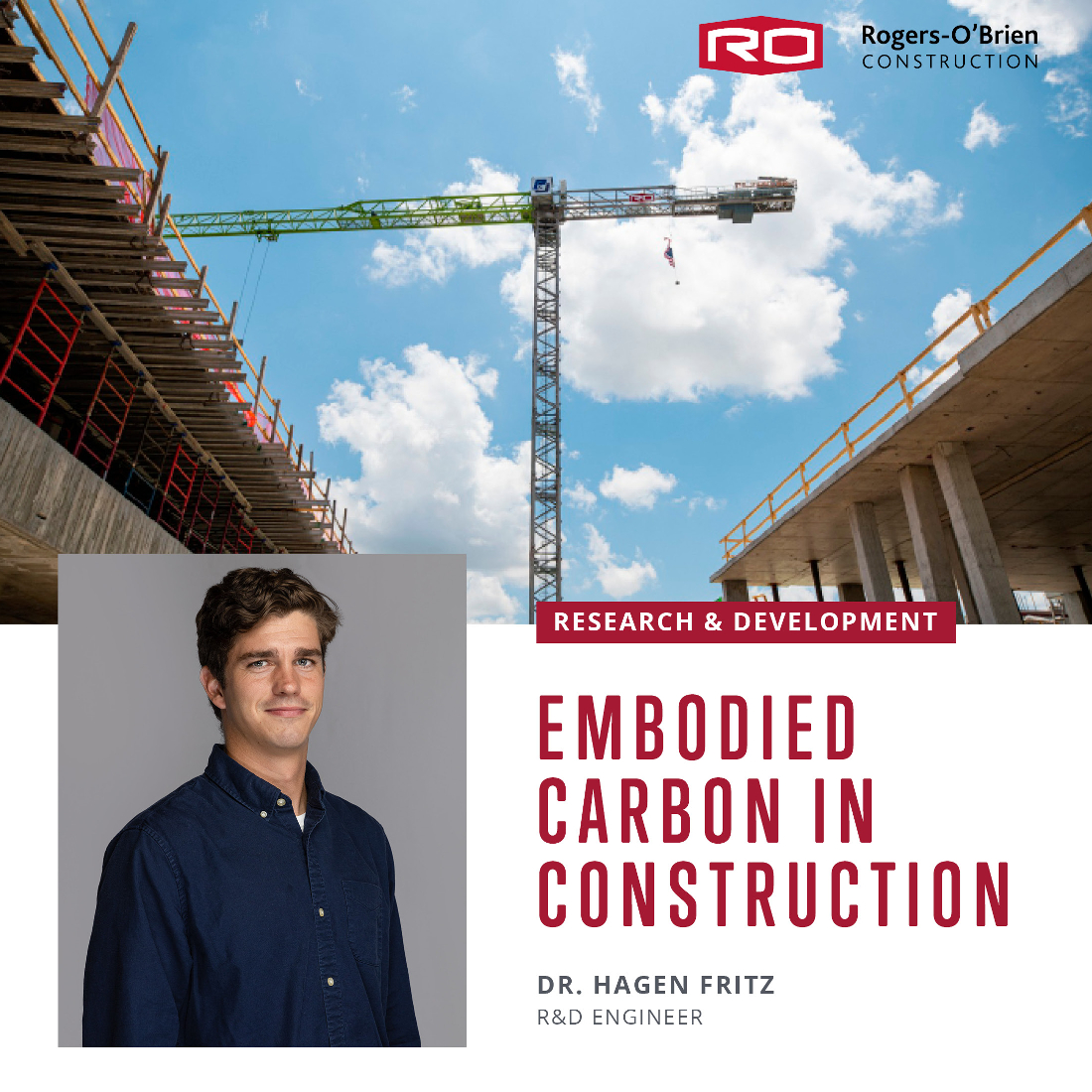Introduction
More and more owners and developers are curious about the carbon impact of their projects and looking to their builder as the subject matter expert. This is not just something happening in California. We’ve experienced it firsthand, with several clients directly approaching RO with questions about this topic. It's becoming essential for RO to be well-informed about what embodied carbon is and how it influences our buildings. RO’s Dr. Hagen Fritz (R&D Engineer) and @James Holmes (R&D Manager) took a closer look at embodied carbon on one of our job sites, and here's what they discovered.
First things first – what is it? Embodied carbon is the greenhouse gas emissions arising from manufacturing, transporting, installing, maintaining, and disposing of building materials.
The construction industry consumes 40% of the globe's energy and emits 30% of the harmful gases that alter our climate. A substantial part of this footprint is "embodied carbon," the harmful gases produced during the lifecycle of building materials.
This executive summary highlights our findings from an extensive research effort. We’ll dive into the concept of embodied carbon and provide results from a case study of the 1301 South Lamar office building project, where we use material properties and quantities to estimate that project’s embodied carbon.
Case Study: Key Findings

We found that the total cradle-to-gate embodied carbon for the 1301 South Lamar project was 8.5 million kg eCO2 (18,847,000 lbs eCO2) with a carbon intensity of 217.4 kg eCO2 per m2 of gross building area (44.59 lbs eCO2/ft2). This estimate accounts for 77 materials that were used for Foundation, Structure, and Enclosure (SFE). Figure 1 shows the breakdown of embodied carbon for Divisions 3 through 9. Divisions 3 (Concrete) and 5 (Metals) accounted for approximately 93.5% of the building’s total embodied carbon. This finding highlights that Divisions 3 and 5 represent the greatest areas to reduce embodied carbon. Just a small percentage decrease in emissions within these two divisions would eclipse even major reductions in emissions from the other five divisions.

Figure 2 compares the embodied carbon intensity from the 1301 South Lamar project to a subset of buildings from the Carbon Leadership Forum (CLF) database. The comparison references cradle-to-gate values from office buildings with one to six above-grade floors. The embodied carbon estimate for 6 of these buildings considers structure and foundation (SF) only, while the other 3 consider structure, foundation, enclosure, and interiors (SFEI). These results illustrate the validity of our method while also showcasing how RO’s projects can achieve value within the traditional embodied carbon spectrum.
Methods
We selected the 1301 South Lamar project for our case study because of its mixed-use design, pursuit of LEED Silver, and familiarity with the project. To estimate the embodied carbon, we used a quantitative estimate method that involves calculating the number of different materials used and multiplying those quantities by eCO2 emissions factors, which are documented in CLF’s Inventory of Carbon and Energy (ICE) database. Carbon dioxide equivalent (eCO2) is a metric that expresses the climate impact of a greenhouse gas in terms of the amount of carbon dioxide that would create the same level of warming. The ICE database provides cradle-to-gate eCO2 emissions factors for common construction materials. “Cradle-to-gate” refers to the carbon emissions associated with raw material extraction, transportation to manufacturing sites, manufacturing processes, and transportation to distribution centers.
Conclusion
The life cycle energy cost and climate effects of an individual building can be divided into one of two categories: operational or embodied. As building operations become more efficient, embodied carbon is beginning to encompass more of a building’s lifetime carbon footprint. The amount of embodied carbon depends on two components: the material type and the source of that material. By using locally sourced materials that require less energy to extract and process, builders can reduce the carbon footprint of their construction projects and contribute to environmental sustainability.
What now?
We can lead the charge in collaborating with design partners and trade partners to measure and track embodied carbon.
Key questions we can consider as the emphasis on decarbonization efforts continue include:
· Do we consider carbon emissions in the design or product selection phases?
· How can we work with our trade partners on embodied carbon tracking?
We hope this report makes embodied carbon easy to understand. When RO works on projects where embodied carbon is a point of discussion, we can talk about it clearly and confidently. By learning about embodied carbon now, we prepare ourselves to build an even better Texas.

